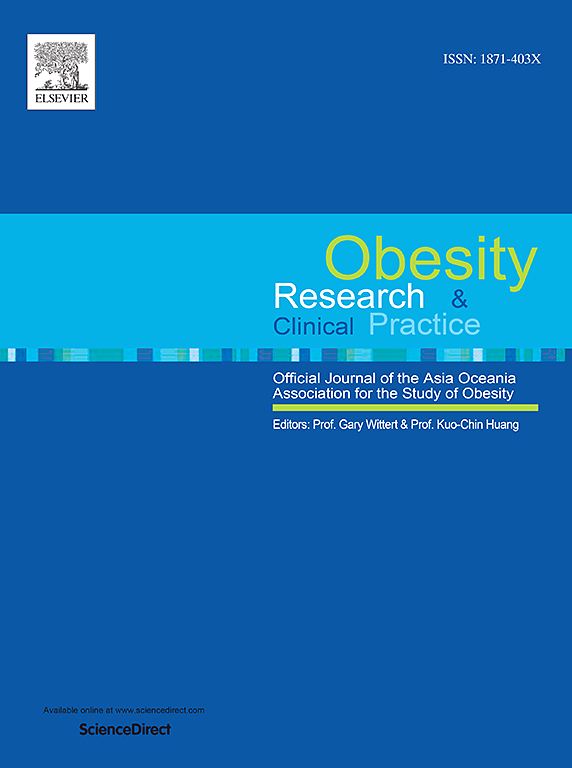在肥胖人群中,免疫Th1和Tc1细胞浸润内脏脂肪组织的比例很高。
IF 2.5
4区 医学
Q3 ENDOCRINOLOGY & METABOLISM
引用次数: 0
摘要
肥胖发病时皮下(SAT)和内脏(VAT)脂肪组织功能障碍可导致炎症分子表达增加,从而导致免疫细胞浸润。目的是深入表征T细胞,浸润SAT和VAT的T细胞,与接受减肥手术的个体的外周血(PB)进行比较。招募了42名成年人,收集了SAT和VAT样本。采用流式细胞术进行T细胞鉴定。结果表明,与SAT相比,肥胖人群浸润VAT的T细胞对Th1、Tc1和t1样CD4+CD8+ T细胞表现出更高的极化。这些细胞也表现出更高的活化细胞百分比,以及更高的pd -1表达细胞百分比。术后7 ~ 18个月Th1/17和Tc1/17细胞的百分比明显升高。综上所述,SAT和VAT中T细胞的表型及其PD-1的表达有所不同,特别是与PB相比。本文章由计算机程序翻译,如有差异,请以英文原文为准。
High percentage of immune Th1 and Tc1 cells infiltrating visceral adipose tissue in people with obesity
Subcutaneous (SAT) and visceral (VAT) adipose tissue dysfunction during the obesity onset can lead to increased expression of inflammatory molecules, and consequently to immune cell infiltration. The aim was to deeply characterize the T cells, those infiltrating SAT and VAT, compared to peripheral blood (PB), in individuals undergoing bariatric surgery. Forty-two adult individuals were recruited, SAT and VAT samples were collected. T cell characterization was performed by flow cytometry. Results show that T cells infiltrating VAT from people with obesity display higher polarization towards Th1, Tc1 and T1-like CD4+CD8+ T cells, compared to SAT. These cells also display higher percentage of activated cells, and a higher percentage of PD-1-expressing cells. Furthermore, the percentage of Th1/17 and Tc1/17 cells was increased 7–18 months post-surgery. In summary, the phenotype of T cells and their expression of PD-1 within SAT and VAT appear different, especially compared to PB.
求助全文
通过发布文献求助,成功后即可免费获取论文全文。
去求助
来源期刊

Obesity research & clinical practice
医学-内分泌学与代谢
CiteScore
7.10
自引率
0.00%
发文量
80
审稿时长
49 days
期刊介绍:
The aim of Obesity Research & Clinical Practice (ORCP) is to publish high quality clinical and basic research relating to the epidemiology, mechanism, complications and treatment of obesity and the complication of obesity. Studies relating to the Asia Oceania region are particularly welcome, given the increasing burden of obesity in Asia Pacific, compounded by specific regional population-based and genetic issues, and the devastating personal and economic consequences. The journal aims to expose health care practitioners, clinical researchers, basic scientists, epidemiologists, and public health officials in the region to all areas of obesity research and practice. In addition to original research the ORCP publishes reviews, patient reports, short communications, and letters to the editor (including comments on published papers). The proceedings and abstracts of the Annual Meeting of the Asia Oceania Association for the Study of Obesity is published as a supplement each year.
 求助内容:
求助内容: 应助结果提醒方式:
应助结果提醒方式:


